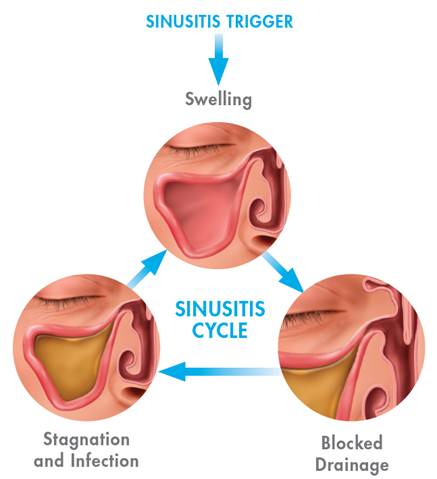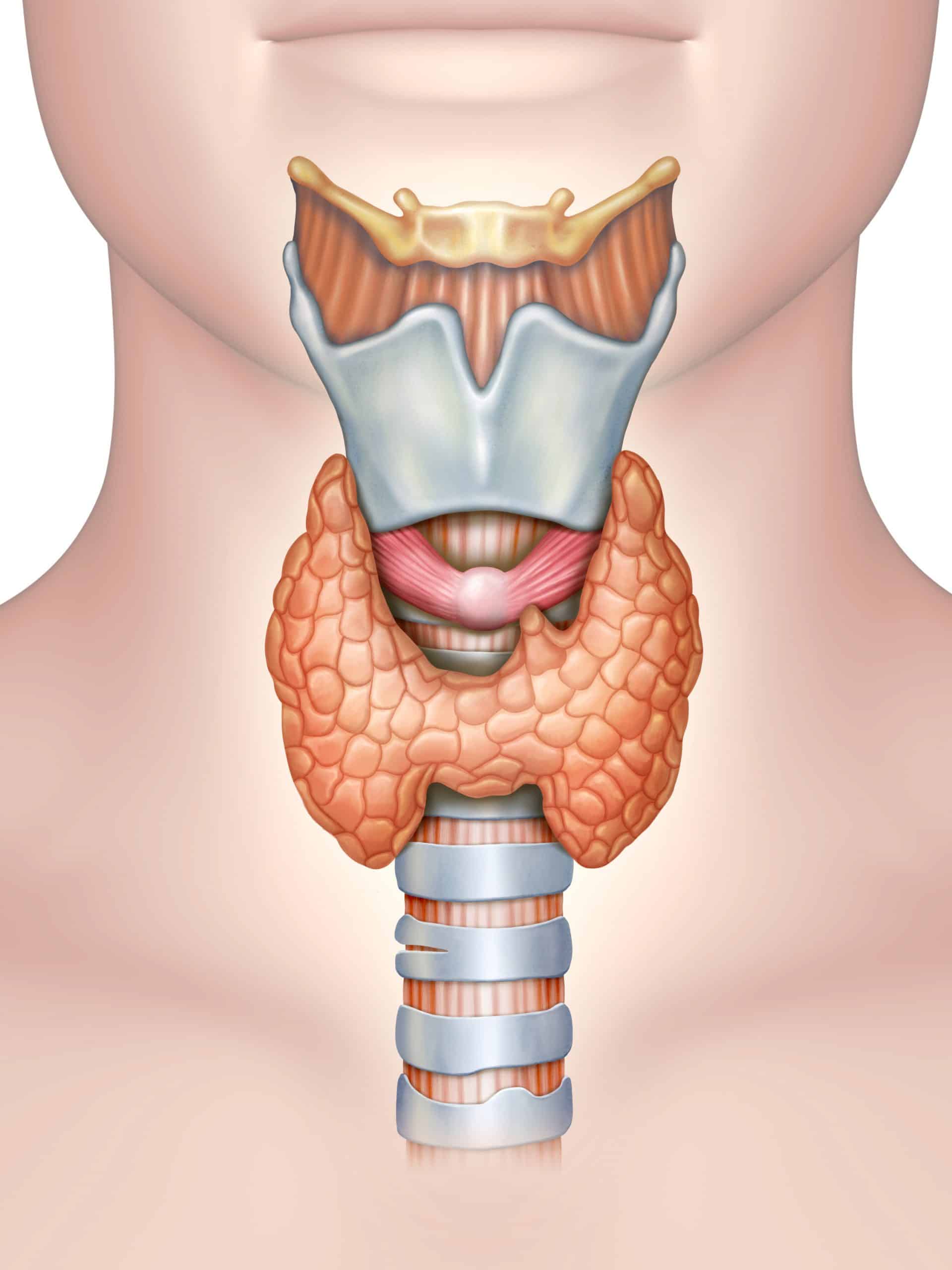Acid reflux is a symptom that results from gastric contents flowing up into the esophagus. These gastric contents contain gastric acid and pepsin which cause heartburn and possible damage to the esophagus lining. Gastroesophageal reflux disease (GERD) occurs when acid reflux has caused extensive structural damage to the esophagus and the lower esophageal sphincter (LES). The causes of acid reflux are stress, low stomach motility or gastroparesis, gastritis, and infections.
Stress is one of the main root causes of acid reflux. Acid production in the stomach is regulated by the Vagus nerve upon food ingestion. The Vagus nerve plays a central role in the regulation of gastric acid secretion. In response to meal ingestion, the medullary raphe nuclei in the brain stem produces thyrotropin releasing hormone (TRH) which is the central excitatory mediator that activates the dorsal motor nucleus (DMN) of the Vagus. This is the cephalic phase of acid secretion. In response to activation of DMN, stomach parietal cells secrete gastric acid (HCl) and G-cells secrete gastrin, a peptide hormone that stimulates secretion of acid by the parietal cells. This is the gastric phase of acid secretion.
As much as 50 percent of the maximal acid response to a meal may be due to the cephalic phase. Stress can reduce stomach acid secretion by affecting the cephalic phase because stress may interfere with TRH secretion. Experiments have shown that microinjections of small doses of TRH into the DMN in rats cause significant stimulation of acid secretion and contractions of the stomach. Administration of oxytocin, a peptide known to be released during stress by the intracisternal (i.c.) area of the brain produces an inhibitory effect on acid secretion. Stress can also cause reduced acid secretion by interfering with the gastric phase of acid secretion. Stress induced blood flow reduction to the stomach can substantially decrease the parietal cell and the G-cell response to the Vagus nerve impulses.
The closure of the LES or cardiac sphincter is partially controlled by stomach acid levels. High quantities of stomach acid triggers tight closing of the LES. Reduced acid levels under stress produce a weaker signal to close the LES. A weaker signal to close the LES causes the stomach to stay open and allows what little acid is in the stomach to come up and irritate the esophagus and cardiac sphincter. The acid irritation of the esophagus causes heart burn, reflux and even indigestion.
Indigestion and gastroparesis are conditions characterized by decreased gut motility and delayed emptying of the stomach and small intestines. Gut motility is regulated by the enteric nervous system (ENS), a mesh-like system of neurons. Physical or mental stresses increase blood flow to the muscles and brain resulting in a diversion of blood away from other body parts, most commonly the gut. This relative decrease in blood flow to the gut can affect enteric nervous function, slow gut motility, and thus cause indigestion and gastroparesis. Excess carbohydrate and caffeine intake also has adverse effects on gut motility by interfering with enteric nervous function.
Even though some patients with GERD have weak LES or diaphragmatic sphincters, in most patients, especially in cases of mild to moderate reflux disease, LES and diaphragmatic sphincter function is normal. Back flow of stomach contents into the esophagus is usually caused by transient LES relaxation (TLESR) induced by a pressure build up and gastric distention due to indigestion, gastroparesis, or over eating. Such processes are regulated by the enteric nervous system. Indigestion and gastroparesis will cause nausea and vomiting in addition to acid reflux. Other symptoms of gastroparesis include bloating, a feeling of fullness after eating just a few bites, weight loss, and nutritional deficiencies in severe cases due to lack of appetite and reduced food intake, as well as abdominal pain though the cause of the pain is unclear.
Gastroesophageal reflux disease (GERD) affects more than 40 percent of Americans. GERD is a more severe form of chronic acid reflux in which esophagus and lower esophageal sphincter damage has occurred. Such damage is caused by the back flow of chyme which contains not only stomach acid but also stomach enzymes such as pepsin which break down the structure of the esophagus and the lower esophageal sphincter. The digestive process starts when food ingestion triggers stomach acid production by the parietal cells in the stomach lining, a process regulated by the Vagus nerve. The stomach acid then induces the chief cells in the stomach lining to secrete pepsinogen. Pepsinogen is an inactive precursor that is converted to pepsin by stomach acid. Already present pepsin can also further activate the pepsinogen to pepsin. Pepsin is the main enzyme that digests protein into polypeptides in the stomach. In patients with indigestion or gastroparesis, the refluxed food contents contain not only stomach acid but also pepsin. This mixture can cause extensive structural damage to the epithelium of the esophagus and the lower esophageal sphincter. Impairment of the mucosal integrity will occur leading to the development of GERD. Besides frequent heart burn, other signs and symptoms may include regurgitation of food or sour liquid, difficulty swallowing, dryness in the throat, coughing, wheezing, and chest pain, especially while lying.
When acid reflux progresses to GERD, emotional stress and anxiety can significantly increase GERD symptoms. A more recent study interviewed 12,653 people with GERD and found that nearly half reported stress as the biggest factor that worsened symptoms, even when on medication.9 Anxiety and other psychological distress may impact esophageal motility, which is the contractions of esophagus to move food into the stomach, and the functioning of the LES. Stress also increased GERD and acid reflux symptoms by making them more sensitive to acid exposure.
Hiatal hernia can occur from long-lasting GERD when the LES starts to lose its function and causes acid reflux. Hiatal hernias can also occur when muscle tissue in the diaphragm surrounding the esophageal sphincter weakens allowing the upper part of the stomach to move freely into the hiatus or bulge up through the diaphragm into the chest cavity. The hole in the diaphragm (hiatus) through which food and liquids pass from the esophagus into the stomach enlarges and causes acid reflux. The cause of diaphragm muscle weakness includes inherited structural abnormalities in the diaphragm and excess pressure on the abdomen or muscle strain due to heavy coughing, constipation, or intense physical exertion.
Gastritis is an inflammation of the stomach lining. Chronic stress can cause inflammation of the stomach and LES due to the production of pro-inflammatory cytokines promoted by increased levels of cortisol and other corticosteroids triggered by chronic stress. The inflammation of the stomach and LES further slows the stomach emptying process and exacerbates the indigestion, gastroparesis, and acid reflux conditions.
H. pylori (Helicobacter pylori) are bacteria that can cause an infection in the stomach or duodenum (first part of the small intestine). This usually happens during childhood. Although antibiotic treatment is available for H. Pylori infections, about 20% of patients do not respond. H. Pylori infections trigger stomach mucosal inflammatory response leading to gastritis. Chronic gastritis can progress to atrophic gastritis with a loss of gastric glandular cells, or peptic ulcers with open sores in the stomach or duodenum, gastric adenocarcinoma, or stomach cancer. Most people with H. pylori infections will never have any signs or symptoms. However, when patients start having symptoms they usually include heartburn, burning pain in the upper abdomen that's worse when the stomach is empty, burping, belching or bloating, nausea, dull ache, loss of appetite and weight loss.
H. pylori gastritis can alter gastric acid secretion. In subjects with a predominant antral gastritis with the infection on the lower portion of the stomach, acid secretion is increased predisposing to duodenal ulcer. In others with predominant body gastritis with the infection in the middle portion of the stomach, acid secretion is impaired and the subjects have an increased risk of gastric cancer. The stomach acidity can also alter the distribution of the infection. When H. pylori-positive subjects with antral gastritis are treated with proton pump inhibitors, the inhibition of acid secretion can induce a body gastritis which augment the acid reduction effect of the drug. When H. pylori colonizes in the esophagus, it increases the severity of esophageal inflammation and the incidence of Barret's esophagitis (BE) and GERD.
Although H. pylori colonization is a strong risk factor for peptic ulceration and distal gastric cancer; clinical data shows that the prevalence of H. pylori is inversely related to GERD and its sequelae, which include Barrett's esophagus and esophageal adenocarcinoma. H. pylori eradication may lead to the development of new erosive GERD.5,6 In a study which followed 167 patients, it was found that after 16 months of successful treatment, 20 of them tested positive for H. pylori again. Among the 147 patients who have negative H. pylori tests, 87 patients (60%) still reported heartburn, epigastric pain or nausea. Among them 46 patients reported heartburn and 18 of them (39%) stated that the heartburn is a new symptom.7 The development of GERD after H. pylori eradication may be related to the extent of atrophy and intestinal metaplasia. The eradication of H. pylori causes improvement of gastric atrophy and intestinal metaplasia and increase of gastric acid secretion levels in corpus predominant gastritis. These changes increase the risk of reflux esophagitis and low-dosage aspirin ulcers.8
Liver conditions can also cause GERD and acid reflux symptoms. Clinical data shows that individuals who have fatty liver diseases are at a greater risk of being diagnosed with GERD. Portal hypertension and liver fibrosis or cirrhosis can cause slowdown of the blood flow that comes from the digestive tract passing through the liver. This results in the blood accumulation in the digestive system and puts pressure on the GI and affects GI function causing acid reflux as well as other conditions and symptoms including gastroesophageal varices, portal vein hypertension, stomach tightness, difficult swallowing, and sensation of lumps in the throat.
Antacids including proton pump inhibitors are commonly used by patients with acid reflux. Prolonged use of antacids reduces the acidity of the stomach lumen. As a result, bacteria can survive the acid sterilization process in the GI tract and cause infection and inflammation. This causes an imbalance of gut flora, over growth of unfriendly germs which can lead to infections.







